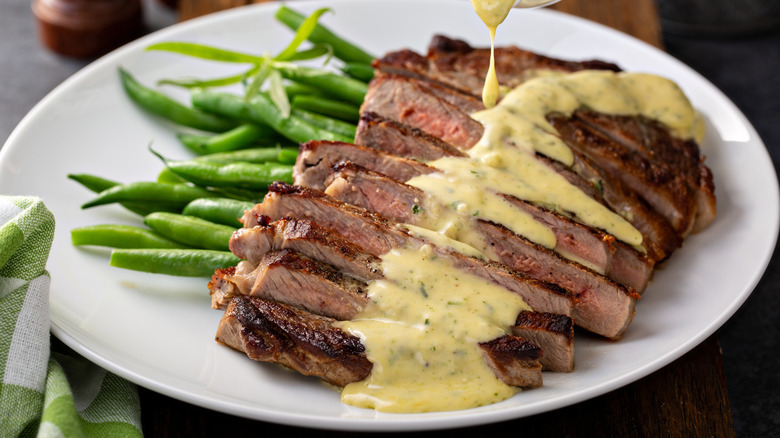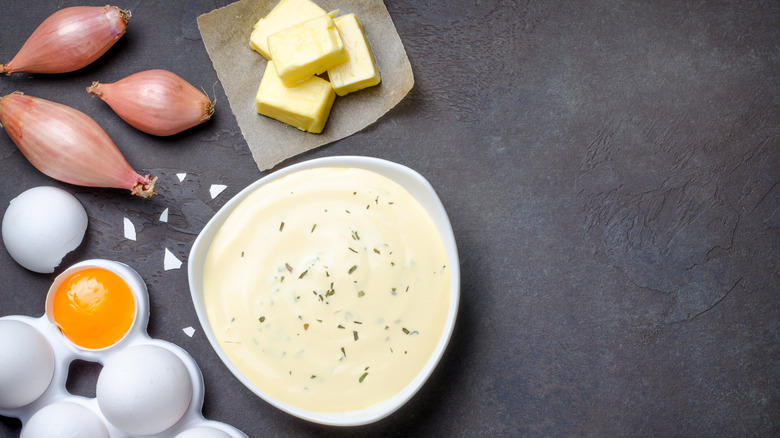The Blender Trick For Extra Creamy Bernaise Sauce
If you're a lover of a good steak, you probably know a lot of the tips and tricks to sear a lovely example at home, from cooking it in the oven then finishing it with a hard sear on a cast iron pan – a la Guy Fieri — to heavily seasoning it with kosher salt to ensure a delightfully flavorful outcome. But even the most experienced steak master among us will occasionally produce a hunk of meat that's a bit on the dry or under-seasoned side, and in those cases — or even when your steak came out nearly perfect but just needs some extra oomph — you might want to slather it in a flavorful steak sauce.
Most of us are familiar with the tangy, tomato-based bottled stuff that perfectly complements a fatty steak (via Kraft Foods), but a variety of homemade steak sauces can be even more delicious, from umami-rich burnt onion steak sauce to creamy, Cognac-spiked green peppercorn sauce. And if you want to go uber-classic, you can whip up a bearnaise sauce, a time-tested steakhouse accompaniment that consists of emulsified butter and egg yolks that are flavored with white wine vinegar, shallots, and tarragon (via MasterClass). Thick and rich, there's an easy trick you can employ at home to turn out a bearnaise that's extra-creamy and delightful.
Warm your blender before buzzing your bearnaise
If you've ever made bearnaise, then you might already know that this fairly simple sauce is basically a hollandaise that's been flavored with white wine vinegar that's reduced with shallots and tarragon. Neither of the sauces are difficult to make at home, but since they involve emulsifying egg yolks with butter, a blender can definitely be a handy tool to use as opposed to a whisk.
If you want to turn out a bearnaise sauce that's perfectly creamy without risking the sauce splitting, you might want to take a cue from Food & Wine's Justin Chapple, who advises that a warm blender is a way to go. As he demonstrates in a video on the site, before blending the egg yolks with the vinegar reduction and then the softened butter, Chapple fills his blender with hot tap water, then dumps it out and wipes the blender dry.
"When you start to incorporate the butter during the puréeing process, you want to make sure that it's not going to seize up because the blender is too cold," Chapple explains in the video. Without this step — especially if it's pretty chilly where you live — the butter could resist being blended into the sauce, leaving a chunky, uneven béarnaise instead of a perfectly smooth one. So the next time this classic sauce is on the menu, make sure you've got some hot water on hand before getting to work.

